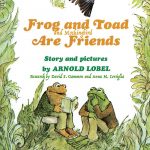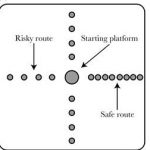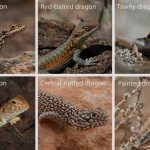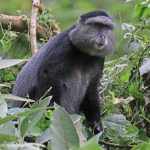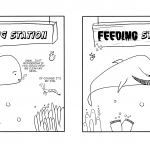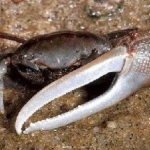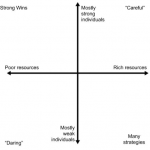As these warm summer days slowly fade into cool autumn you may notice squirrels, chipmunks and other small animals seeking refuge in a hollowed tree or underground burrow in preparation for a cold winter. While the imminent threat of freezing is marked by shorter and less temperate days, some dangers aren’t as initially apparent. Particularly, threats of predators of these prey may be lurking in the shadows waiting to pounce at any moment.

We humans typically notice hazards through visual and auditory cues because these are our strongest senses, though olfactory senses (smell) play a crucial role in social interactions, detecting prey and path tracing amongst many small critters. However, until now, the role of this sense in predator risk detection has been seldom examined. In a new paper published this month, Avilés et al. 2019, explores the role of smell in the predation detection of birds and rodents in southern Spain.
As a bit of background, small animals such as birds or rodents are typically under higher predation risk than larger mammals, thus, they need to be equipped with systems to detect these threats. Mice for instance have aerial awareness to avoid Hawks and other birds of prey. This large visual field is selected for evolutionarily, but this process also selects against the cost of more precise vision as this is an unnecessary system to maintain and gives the mouse a slim or no competitive advantage.
Avilés and other in their research aim to uncover the role of olfactory cues from predators in the context of nest selection. To do this they set up 259 nest boxes in the regional park of Sierra de Baza in southeastern Spain to emulate the natural nesting habitats of the local birds and rodents. Once set, they then manipulated the scents of these nest with three distinct odor solutions. The first of which was a predator odor taken from two ferrets, the second was a lemon mist scent, and the third was a control liquid that had no smell. After randomly distributing the odors across nesting boxes in equal proportion, the researchers observed some interesting nesting patterns.
One of the first things to note is that there was a distinct difference in nesting speed and proportion of nests that were filled of the odorless boxes in contrast to those with any odor. This is what Avilés and his team had expected, and though there was no significant difference in the nesting percentage of lemon versus predator scent, animals would nest much more quickly in the lemon scent box in contrast to the predator box.

As seen in this graph, there were distinct nesting differences between the treatments. To summarize, non-occupational survival in short is the percentage of nesting boxes within that variable group that had yet to be occupied after that number of days had passed after the odor treatment.
The baseline of 0.5 is due to the excess of nests comparable to the population. It is assumed that these nests are in surplus which was intentional in order to avoid competitive situations between species for nests.
The implications of this study are that there is a prioritization of predation risk in these animals. Something that is unknown or new in their experience such as lemon extract is still considered relatively hazardous although something that is a known threat such as a predator is typically considered more dangerous across the community. This may also imply that there are patterns that birds and rodents have learned or are instinctually averse to. This conclusion is similar to the visual and auditory pattern recognition used by birds and rodents in signaling and signal detection.
Though ferrets are similar to a type of natural predator in these nest box locations, a more prominent predator would actually be a type of local snake. As a result, the predation cues from the predator scent may not have been adequately learned or may not be as strong as similar individuals within other habitats.

These findings lead to additional questions that have yet to be explored such as how the strength of a cue is received by an animal. For this experiment the strength of the odor was uniform, but it may be interesting to determine if there is any correlation between the strength of this cue and the strength of the response from the prey. Along with this supplementary research it may be interesting to see how these animals may react in a situation where nests are scarce, and to observe their relative cost prediction of predation based only on olfactory cues. In this experimental design the surplus of housing removed that pressure and may have allowed the birds and rodents to be more selective than typical with their nesting choices.
The most significant take-home from this study is that olfactory cues do seem to play a critical role in the risk analysis of rodents and birds in their nesting locations, which in turn may affect the distribution of these animals away from the predator controlled portions of the environment. This also potentially gives advantages to predators with less of an odor such as snakes.
References:
Avilés, J. M., Parejo, D., & Expósito-Granados, M. (2019). Avian and rodent responses to the olfactory landscape in a Mediterranean cavity community. Oecologia, 191(1), 73–81. doi: 10.1007/s00442-019-04487-w

